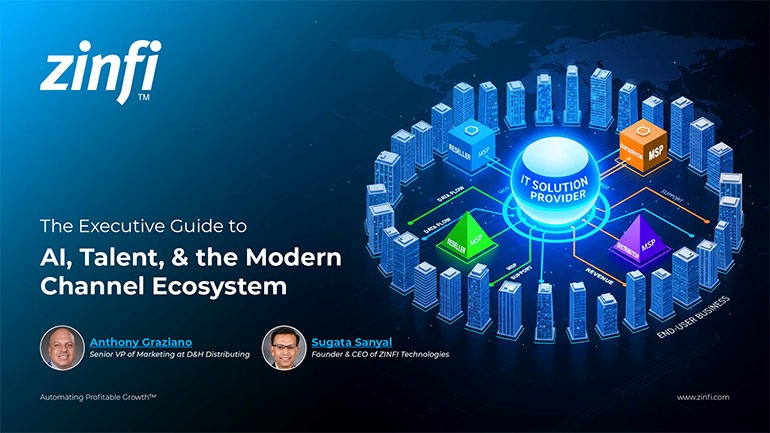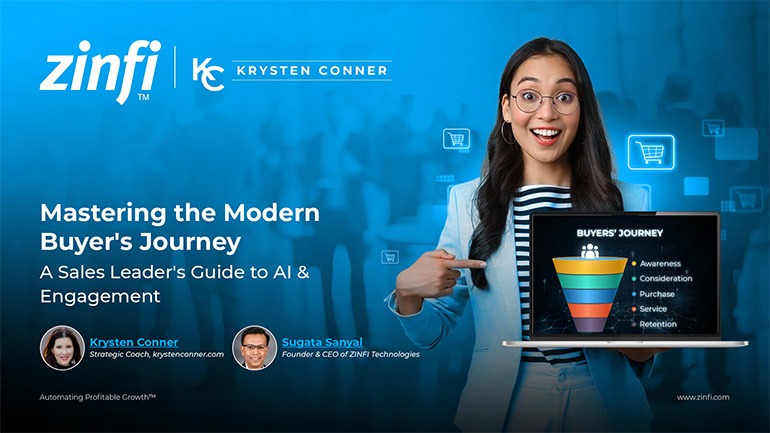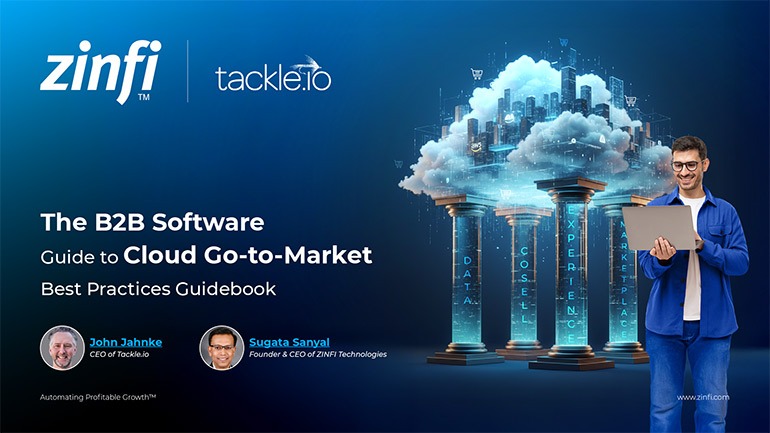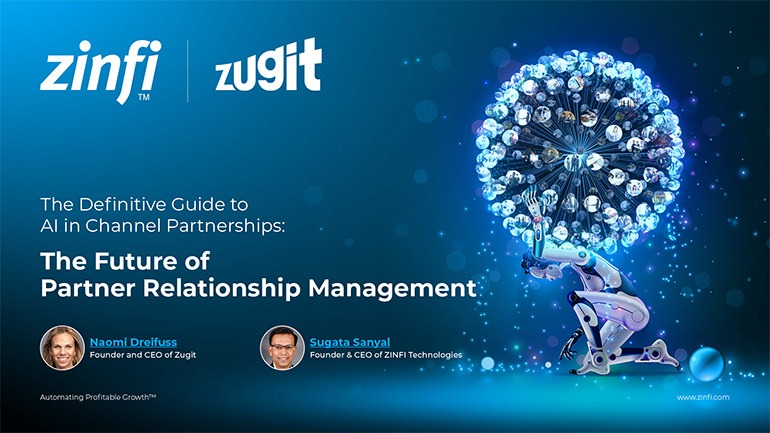Best Practices Articles

The Best PRM Software for Small Manufacturing Businesses: Your Definitive Guide
Success in modern manufacturing is no longer just about product quality. For small manufacturing businesses with fewer than 100 employees, the efficiency, loyalty, and performance of their indirect sales channels—including dealers, distributors, reps, and resellers—are critical. These partners are the lifeblood of your go-to-market strategy, and they extend your reach far beyond what a small internal sales team can achieve. However, managing these complex networks with spreadsheets, emails, and various tools leads to inefficiency, missed opportunities, and strained relationships. This is why a strategic asset like best prm software is so important. Choosing the right best prm software can feel daunting.
The market is filled with options, many designed for large enterprises with budgets and complexities that do not apply to a small manufacturing firm. You need a powerful yet intuitive solution, comprehensive yet affordable, and scalable enough to grow with you. This definitive guide is designed specifically for owner-operators, sales managers, and business development leads in the small manufacturing sector. We will break down the best prm software, why it is critical for your business, the essential features to look for, and how to evaluate the best prm software for your unique needs. We will ensure you make an investment that drives tangible channel revenue and maximizes your return on investment (ROI).
What is the best prm software for Small Manufacturing?
Partner Relationship Management (PRM) software is a specialized platform that streamlines and automates the entire lifecycle of your channel partnerships. Think of it as a CRM (Customer Relationship Management) system built specifically to manage your relationships with your sales partners, not your end customers. For a small manufacturing business, the best prm software system is a centralized, digital hub that empowers you and your partners to collaborate, sell, and grow together. In the manufacturing context, your "partners" can include a diverse group:
- Distributors: Companies that buy your products in bulk and sell them to dealers or end-users.
- Dealers: Retailers or specialized businesses that sell your products directly to the end customer.
- Manufacturer's Representatives (Reps): Independent sales agents representing your product line alongside others.
- Value-Added Resellers (VARs): Partners who bundle your product with their services or other products to create a complete solution.
- System Integrators (SIs): Firms that integrate your components into larger systems for end customers.
Small manufacturing businesses operate with lean teams and tight budgets, unlike large corporations. You cannot afford a complex, expensive system that requires a dedicated IT department. The best prm software for manufacturing on a small scale addresses these specific constraints. It is not just about managing contacts; it is about enabling your partners to become a valid, high-performing extension of your sales team. A robust PRM platform automates critical processes like partner onboarding, training and certification, lead distribution, marketing development funds (MDF) management, and performance tracking. It provides a single source of truth for all channel-related activities, eliminating the chaos of scattered data and inconsistent communication. This automation frees your internal team from time-consuming administrative tasks, allowing them to focus on high-value activities like strategic partner recruitment and joint business planning. It provides your partners a seamless, professional, and supportive experience, giving them the tools and resources they need to sell your products effectively and feel valued as part of your ecosystem. A proper prm software solution is a game-changer for your business.
Why Spreadsheets and Generic CRM Aren't Enough
Many small businesses start by managing their channel with spreadsheets or by trying to adapt their existing CRM. While this might work for a handful of partners, it quickly breaks down as your network grows. A great prm software solution is necessary for growth.
- Lack of Scalability: Spreadsheets become unwieldy, prone to errors, and impossible to manage in real-time as you add more partners and product lines.
- Poor Partner Experience: Partners are forced to navigate a clunky, manual process for everything from lead registration to accessing marketing materials. This frustration can lead to disengagement and attrition, something the best prm software can help prevent.
- No Centralized Communication: Important updates, training materials, and sales collateral get lost in email chains, which leads to inconsistent messaging and partners using outdated information.
- Inability to Track Performance: It is nearly impossible to get a clear, data-driven view of which partners are performing well, which leads are converting, and what the ROI of your marketing funds is.
- Security Risks: Sensitive business and partner data stored in unsecured spreadsheets is a significant liability.
A dedicated best prm software solution is purpose-built to solve these challenges, providing a secure, scalable, and user-friendly framework for comprehensive manufacturing channel management.
Key Features of the best prm software for Small Manufacturing
When you evaluate PRM for small businesses in the manufacturing sector, it is crucial to look beyond the surface-level features. You need a platform that directly addresses the day-to-day realities of managing a dealer and distributor network. A good best prm software will include these must-have features. Here are the must-have features to prioritize.
- Partner Portal & Content Management System (CMS)
- Ease of Use: The interface must be clean, simple, and easy for non-technical users to navigate. If your partners cannot find what they need in a few clicks, they will not use it. The best prm software prioritizes ease of use.
- Branding and Customization: The portal should look and feel like an extension of your brand, reinforcing your corporate identity and creating a professional experience.
- Content Management: You need an easy way to upload, organize, and manage all your channel-facing content. This includes product spec sheets, technical manuals, price lists, sales playbooks, marketing brochures, and training videos. The system should allow version control to ensure partners always use the most up-to-date materials.
- Personalization: The best prm software allows you to personalize the portal experience. For example, a dealer in North America might see different pricing and promotions than a distributor in Europe. This ensures partners only see content that is relevant to them.
- Partner Onboarding, Training & Certification
- Automated Onboarding Workflows: You can create step-by-step onboarding checklists that guide new partners through contract signing, profile completion, and initial training modules. This is a core feature of the best prm software.
- Learning Management System (LMS): An integrated LMS is a game-changer. It allows you to build structured training courses, deliver video content, and administer quizzes to certify partners on product knowledge, installation procedures, or sales methodologies.
- Certification Tracking: You can automatically track which partners have completed required certifications. This is crucial in manufacturing to ensure compliance and quality control, especially for technical products that require specialized installation or service knowledge. The best prm software makes this process seamless.
- Lead Management & Distribution
- Automated Rules-Based Distribution: Set up rules to automatically assign leads to partners based on territory, product specialization, partner tier, or performance. This eliminates manual assignment and ensures the partner best equipped to win the deal gets the lead instantly.
- Lead Registration & De-duplication: Provide a simple form for partners to register their sourced deals. The system should automatically check for duplicates to prevent channel conflict (i.e., multiple partners claiming the same deal).
- Real-Time Tracking: Both you and your partners should have complete visibility into the lead lifecycle, from assignment to conversion. This transparency builds trust and accountability. This feature is a hallmark of the best prm software.
- Co-Branded Marketing & Through-Channel Marketing Automation (TCMA)
- Asset Customization: Provide marketing templates (e.g., emails, flyers, social media posts) that partners can easily co-brand with their logo and contact information.
- Campaign-in-a-Box: You can package complete marketing campaigns with all the necessary assets and instructions, allowing partners to execute sophisticated campaigns with minimal effort. This is a crucial feature of the best modern prm software platform.
- Email & Social Media Automation: TCMA tools allow you to execute marketing campaigns for your consenting partners, ensuring consistent brand messaging while driving leads directly to them. This is a massive value-add for small dealers who may lack marketing resources.
- Marketing Development Funds (MDF) & Co-Op Funds Management
- Budget Allocation: Allocate funds to partners based on tier, performance, or strategic importance.
- Proposal and Approval Workflows: Partners can submit proposals for marketing activities directly through the portal. You can then review, approve, or deny these requests through an automated workflow.
- Claims and Reimbursement: Partners can submit proof of performance (e.g., invoices, event photos) and claim reimbursement through the portal. This creates a clear audit trail and drastically reduces administrative overhead.
- ROI Tracking: Crucially, the system should allow you to link MDF spend to specific campaigns and resulting leads, enabling you to calculate the ROI of your marketing investments. For more details, see our guide on how to calculate PRM ROI.
- Deal Registration & Pipeline Management
- Simplified Registration Form: Make it incredibly easy for partners to register a new deal.
- Automated Approval Workflow: Route new registrations to the appropriate channel manager for fast approval or rejection.
- Shared Pipeline Visibility: Provide a clear, shared view of the sales pipeline. This helps with forecasting and allows you to see where to provide support to help partners close deals.
- Analytics and Reporting
- Partner Performance Dashboards: Get an at-a-glance view of key metrics: partner-sourced revenue, lead conversion rates, training completions, and marketing engagement.
- Leaderboards: Foster friendly competition by displaying leaderboards that rank partners on key activities and results.
- Customizable Reports: The ability to drill down into the data and create custom reports is essential for making informed strategic decisions about your channel program.
The partner portal is the digital storefront of your channel program. It is the single, secure place where your partners log in to access everything they need. A best-in-class PRM will offer a highly intuitive and brandable portal.
Getting a new partner up to speed quickly and effectively is critical. A slow, manual onboarding process delays their time-to-revenue and can sour the relationship from the start.
Efficiently passing leads to the right partner is one of the most essential functions of a PRM. Fumbling leads can lead to channel conflict and lost revenue. This is a key capability of the best prm software.
Your partners are your marketing force multipliers. The best prm software empowers them to market your products effectively in their local territories.
Managing MDF and co-op marketing programs via spreadsheets is a common headache for small manufacturers. The best prm software brings structure and accountability to this critical investment.
Deal registration is the cornerstone of any healthy channel program. It protects the partner who brings you a new opportunity and gives you vital visibility into your sales pipeline. A dedicated best prm software will have this feature.
You cannot manage what you cannot measure. Robust analytics are non-negotiable for the best prm software solution.

Choosing the best prm software: A Step-by-Step Evaluation Process
Now that you know what features to look for, how do you choose the right platform from the available options? Follow this structured approach to select the best prm software for your small manufacturing business.
Step 1: Define Your Goals and RequirementsBefore viewing a single demo, you must be clear about your goal. Gather your key stakeholders (sales, marketing, leadership) and answer these questions:
- What are our most significant channel pain points right now? (e.g., "It takes too long to onboard a new dealer," "We have no idea which of our marketing dollars are working," "Our partners complain they can't find the latest price list.")
- What are our primary business goals for this investment? (e.g., "Increase partner-sourced revenue by 30%," "Recruit 20 new dealers in the Midwest region," "Reduce time spent on channel admin by 10 hours per week.")
- Who will use the system? Consider the technical savvy of both your internal team and your partners. The system must be user-friendly for everyone.
- What is our realistic budget? Consider both the initial setup fees and the ongoing subscription costs. An affordable best prm software is key for a small business.
Your best prm software does not live in a vacuum. Its ability to connect with your other business-critical systems is crucial for creating a seamless data flow.
- CRM Integration: This is the most critical integration. Your PRM needs to sync seamlessly with your CRM (e.g., Salesforce, HubSpot, Zoho). This allows for a bidirectional flow of information, such as passing leads from your CRM to the PRM for partner distribution and pushing partner-registered deals from the PRM back into your CRM for forecasting. This avoids manual data entry and provides a 360-degree view of your sales funnel. To understand the distinction better, explore our article on PRM vs. CRM for small manufacturing.
- ERP Integration: For manufacturing companies, integrating with your Enterprise Resource Planning (ERP) system can provide immense value. This could allow partners to see real-time inventory levels, place orders directly, or track shipping status through the portal.
- Marketing Automation Integration: Connecting your PRM to your marketing automation platform (e.g., Marketo, Pardot) lets you track a lead's journey from an initial marketing touchpoint to a partner-closed deal. This is a powerful feature of the best prm software.
PRM pricing models can vary significantly. As a small business, you need a transparent and predictable pricing structure. The best prm software will offer this.
- Per-User vs. Per-Partner vs. Tiered Models: Some vendors charge per internal user, others charge per active partner, and some offer tiered packages with different feature sets. Understand which model aligns best with your business. A per-partner model can become expensive quickly as you grow. A tiered model that allows you to start with the essentials and add modules later is often ideal for a small, growing business.
- Implementation and Onboarding Fees: Are these included or extra? A complex, lengthy implementation can add significant hidden costs. Look for vendors that offer a streamlined, guided onboarding process.
- Support and Training Costs: Is ongoing support included? What training resources are available for both your team and your partners?
- Scalability: Will the pricing structure punish you for success? Ensure the cost does not balloon as you add more partners and grow your channel revenue.
If the software is clunky and difficult to use, your partners will not adopt it, and your investment will be wasted. The best prm software will be intuitive.
- Request a Live, Personalized Demo: Do not rely on pre-recorded videos. Insist on a live demo where you can ask specific questions relevant to your manufacturing business.
- Involve a Partner in the Demo: Invite one of your trusted dealer principals or reps to sit on a demo. Get their honest feedback on the portal's usability from their perspective.
- Test the Mobile Experience: Many of your partners are on the road or at a job site. A responsive, mobile-friendly portal is no longer a luxury but a necessity.
Choose a partner, not just a platform. The vendor's expertise and support model are as significant as the software. The vendor of the best prm software will be a true partner.
- Industry Experience: Does the vendor have experience working with other manufacturing companies or tiny businesses? They should understand the nuances of a dealer/distributor channel model.
- Customer Support: What does their support model look like? Do they offer phone support, email tickets, and a dedicated account manager? What are their guaranteed response times?
- Roadmap and Vision: Ask about their product roadmap. A good vendor constantly innovates and improves their platform based on customer feedback.
Comparison of the Top best prm software for Small Manufacturing Businesses
While many PRM solutions exist, only a few are truly optimized for the needs and budget of a small manufacturing company. Here is a look at some leading options, each representing a facet of the best prm software.
| Feature / Platform | ZINFI Unified Partner Management | Impartner PRM | Allbound |
| Target Audience | SMBs to Enterprise (Strong focus on modularity for SMBs) | Mid-Market to Enterprise | SMB to Mid-Market |
| Key Strength | Unified Platform: Combines PRM, TCMA, and CMM in one seamless solution. Highly modular, allowing SMBs to start small and scale. | Enterprise-Grade Features: Very powerful and feature-rich, known for its robust capabilities in large, complex channels. | Simplicity & Usability: Praised for its clean interface and focus on partner engagement and ease of use. |
| Small Manufacturing Fit | Excellent. The modular approach means you only pay for what you need. Strong out-of-the-box features for lead management, MDF, and co-branded marketing are perfect for dealer networks. | Good, but potentially overkill. Can be more expensive and complex than what a small manufacturer needs. Implementation can be longer. | Good. A strong contender for usability, but may lack some of the deeper automation capabilities (like advanced TCMA) found in more comprehensive platforms. |
| Pricing Model | Flexible, modular pricing. Designed to be an affordable PRM solution that scales with your growth. | Typically higher entry price point, often geared towards larger enterprise budgets. | Tiered pricing based on the number of partners and features, generally competitive for the SMB market. |
| Integration | Deep, pre-built integrations with major CRMs (Salesforce, HubSpot, etc.) and open API. | Strong integration capabilities, particularly with Salesforce. | Good CRM integrations and a focus on connecting with other sales and marketing tools. |
| Implementation | Rapid and guided implementation process designed to get SMBs up and running quickly. | Can be a more involved and lengthy implementation process due to the platform's complexity. | Known for a relatively straightforward and quick setup process. |
Why ZINFI is the Optimal Choice for Small Manufacturing
For small manufacturing businesses, ZINFI's Unified Partner Management platform offers a compelling and unique advantage. Unlike point solutions that only solve one piece of the puzzle, ZINFI provides a fully integrated suite of applications for PRM, Through-Channel Marketing Automation (TCMA), and Channel Marketing Management (CMM). The key benefit for a small business is modularity. You do not have to buy a massive, monolithic platform. You can start with the core PRM modules you need right now—like the partner portal, lead management, and deal registration—at a price that makes sense for your budget. As your channel program matures and your business grows, you can seamlessly add advanced capabilities like TCMA or automated MDF management without switching platforms or bolting disparate systems. This "start and grow" approach makes ZINFI the ideal dealer management software. It provides the enterprise-grade power you need to compete, but with the flexibility, affordability, and ease of use that a business with under 100 employees demands. It is genuinely the best prm software option for this type of business.
Implementation Best Practices for a Successful PRM Launch
Selecting the right best prm software is only half the battle. A successful launch requires a thoughtful implementation plan.
- Start with a Pilot Program: Before rolling the platform out to your entire network, launch it with a small group of your most engaged and trusted partners. This allows you to gather feedback, work out any kinks in your processes, and build a group of internal champions.
- Clean Your Data: Use the implementation as an opportunity to clean up your partner data. Ensure contact information is accurate, contracts are up-to-date, and partner profiles are complete.
- Develop a Communication Plan: Communicate the "why" behind the new system to your partners. Emphasize their benefits: faster lead delivery, easier resource access, and streamlined MDF and deal registration processes.
- Provide Comprehensive Training: Do not just send them a login and expect them to figure it out. Host live training webinars, create short tutorial videos, and build a resource center within the portal.
- Set Realistic Goals and KPIs: Define what success looks like from day one. Track key metrics like partner adoption rate (portal logins), number of deals registered, and marketing assets downloaded to measure the immediate impact.
Calculating the ROI of Your PRM Investment
Investing in the best prm software is a significant decision for a small business, and you need to be able to justify the cost. The return on investment can be measured through both hard and soft benefits.
The basic formula for ROI is:

Gains from Investment (The "Hard" ROI):
- Increased Channel Revenue: Track the revenue uplift from partners after implementing the PRM. This can come from faster lead follow-up, better-trained partners, and more effective joint marketing. This is a key benefit of a robust best prm software.
- Increased Partner Productivity: If a PRM helps each partner sell just one additional unit or close one extra deal annually, the cumulative effect across your network can be substantial.
- Reduced Administrative Costs: Calculate the hours your channel manager saves weekly by automating tasks like lead distribution, report generation, and MDF claim processing. Multiply these hours by their hourly wage to get a direct cost saving.
- Improved Marketing ROI: By tracking MDF spend against leads and revenue, you can shift your budget away from underperforming activities and double down on what works, stretching your marketing dollars further.
Gains from Investment (The "Soft" ROI):
- Improved Partner Engagement and Satisfaction: A happy, engaged partner is a loyal and productive partner. While it is harder to quantify, this reduces partner churn and recruitment costs.
- Enhanced Brand Consistency: A PRM ensures all partners use the correct branding and messaging, strengthening your brand presence in the market.
- Better Business Intelligence: The data and insights from your best prm software empower you to make smarter, data-driven decisions about your channel strategy.
By tracking these metrics, you can build a robust business case demonstrating how your best prm software platform is not a cost center, but a revenue-generating engine for your manufacturing business.
The Future of Manufacturing Channel Management
The manufacturing world is constantly evolving, and channel management is no exception. Trends like the shift to e-commerce, the need for data-driven insights, and the increasing importance of the partner experience are shaping the future. The best prm software for manufacturing is built to adapt to these changes. A modern, flexible best prm software platform provides the agile foundation you need to:
- Enable E-commerce: Integrate your PRM with e-commerce platforms to allow dealers to place orders online easily.
- Harness Data: Utilize the analytics in your PRM to identify trends, predict sales, and optimize partner performance.
- Create a Seamless Experience: Deliver a best-in-class, consumer-grade digital experience that makes you the easiest and most profitable manufacturer for a dealer to work with.
For a small manufacturing business, your channel is your competitive advantage. Equipping your partners with the best tools, resources, and support is the surest path to mutual growth and success. A powerful, intuitive, and affordable best prm software platform is the single most effective investment you can make to unlock the full potential of your partner ecosystem.
Ready to see how a dedicated PRM solution can transform your manufacturing channel?
Frequently Asked Questions (FAQ)
- What is the difference between CRM and best prm software?
- Our manufacturing business is small. Can we afford a PRM system?
- How long does it take to implement a PRM?
- How will a PRM help us recruit new dealers?
- What is the most essential feature of dealer management software for manufacturers?
A CRM (Customer Relationship Management) is designed to manage relationships and sales processes with your direct end-customers. A PRM (Partner Relationship Management) is designed to manage relationships and sales processes with your indirect sales channel partners, like dealers, distributors, and reps. While a CRM tracks your sales team's interactions with buyers, a best prm software tracks your channel manager's interactions with partners and enables those partners to sell more effectively.
Absolutely. Modern, cloud-based PRM solutions, especially those with a modular approach like ZINFI, are designed to be an affordable PRM for small businesses. You can start with the essential features you need and add more as you grow, ensuring the cost is aligned with the value you receive. The ROI from increased efficiency and channel sales often makes the investment pay for itself very quickly. It is an investment in your growth and a wise use of capital for the best prm software.
Implementation times can vary depending on the complexity of your needs and the platform you choose. However, vendors focused on the SMB market, like ZINFI, prioritize rapid deployment. A typical implementation for a small manufacturing business can take a few weeks to a couple of months, focusing on getting you and your partners up and running on the core functionalities as quickly as possible.
A robust best prm software makes your company significantly attractive to potential partners. During the recruitment process, you can showcase your professional, easy-to-use partner portal as a key benefit of working with you. It demonstrates that you are invested in your partners' success and have the infrastructure to support them. This can be a powerful differentiator against competitors who manage their channel with spreadsheets and email.
While all the features are essential, for most small manufacturers, the most critical initial functionalities are a centralized Partner Portal for content and communication, and a streamlined Lead Management/Deal Registration system. These two features solve the most immediate pain points: ensuring partners have the correct information and eliminating channel conflict, which are the foundational elements of a healthy partner program. A good best prm software will have these as a core offering.
Best Practices Guidebook
 Modernizing Channel Marketing: AI and Ecosystem Enablement Best Practices
Modernizing Channel Marketing: AI and Ecosystem Enablement Best PracticesDownload for FREE
 The Channel’s Shift to Partner-Led With AI Best Practices
The Channel’s Shift to Partner-Led With AI Best PracticesDownload for FREE
 Hyperscalers, ISVs, and AI: Shaping the Future of B2B Software Distribution
Hyperscalers, ISVs, and AI: Shaping the Future of B2B Software DistributionDownload for FREE
 Definitive Guide to a Partner Ecosystem-First Sales Strategy
Definitive Guide to a Partner Ecosystem-First Sales StrategyDownload for FREE
 The Partner-Led Digital and AI Transformation Best Practices
The Partner-Led Digital and AI Transformation Best PracticesDownload for FREE
 Startup Talent Recruitment: Hiring Missionaries, Not Mercenaries
Startup Talent Recruitment: Hiring Missionaries, Not MercenariesDownload for FREE
 The Future of Partner Relationship Management with AI in Partnerships
The Future of Partner Relationship Management with AI in PartnershipsDownload for FREE
 Cybersecurity for the 99%: Strategies from the Frontline
Cybersecurity for the 99%: Strategies from the FrontlineDownload for FREE
 Mastering Partner Relationships: A Strategic Approach to Business Growth
Mastering Partner Relationships: A Strategic Approach to Business GrowthDownload for FREE
 Mastering Partner Relationship Management: Keys to SaaS Channel Success
Mastering Partner Relationship Management: Keys to SaaS Channel SuccessDownload for FREE
 Navigating the AI Revolution: Guide for Partners in the Microsoft Ecosystem
Navigating the AI Revolution: Guide for Partners in the Microsoft EcosystemDownload for FREE
 Mastering the Modern Buyers Journey: Sales Leader’s Guide to AI & Engagement
Mastering the Modern Buyers Journey: Sales Leader’s Guide to AI & EngagementDownload for FREE










